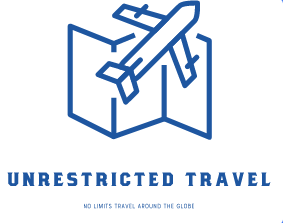Despite its tiny size, Mozambique has a lot to offer tourists. A long coastline along the Indian Ocean boasts popular beaches and marine parks. You can also take a cruise to the Quirimbas Archipelago, which features 250km of coral islands. To the south, you can visit the Bazaruto Archipelago. Regardless of the reason, you’ll be glad you came.

The most popular way to travel in Mozambique is by local buses, which are notorious for their terrible conditions and frequent accidents. Even worse, the drivers aren’t the best either. Most of these vehicles are simply minibuses used by locals. Government-run chapas are generally safer than the unregistered chapas. It is better to travel by public transport if you want to see the country’s diverse landscapes.
There are plenty of places to see and explore in Mozambique. You can tour the former capital of Maputo, which is a World Heritage Site, and admire its old colonial buildings. For an exciting adventure, take a trip to the Niassa Reserve, which is home to rare species such as the African wild dog. While English isn’t widely spoken in Mozambique, it’s possible to converse with locals while touring the National Museum, which houses the most fascinating artifacts and objects from the country’s history.
If you are a fan of wildlife, Mozambique is a must-see. The country has lush tropical forests, beautiful beaches, and a thriving market scene. You’ll have plenty of opportunities to snap pictures and get souvenirs. You can even bargain with vendors for lower prices. In addition to the beautiful scenery and delicious food, you’ll be able to experience the rich culture of the country.
Maputo is a bustling city with markets, historic sites, and delicious food. The city is home to around one million people and has a vibrant nightlife. Visitors can experience the country’s famous seafood and enjoy fresh seafood here. The capital city of Maputo is the perfect place for an adventure holiday. It’s also a great place for foodies. The country’s cuisine is a combination of Portuguese and Malay influences, which creates a variety of flavorful dishes.
If you’re looking for an exotic experience, a safari is a must-see. The Quirimbas Archipelago is a treasure trove of ancient baobab trees, and the capital of Ibo is a mix of Indian, Portuguese, and Swahili. And if you’re a bird lover, you’ll be delighted by the spectacular coral reefs and the enigmatic ruins.
The country’s beaches are a treat to the eye. If you like to snorkel, the “Two Mile Reef” is a must-see for wildlife lovers. Located in the southern end of the Great Rift Valley, the park is easily accessible by road and can be reached by internal flight. Its 4,000 square kilometres of protected natural land include flamingos, lions, and critically endangered birds.
A visit to Mozambique isn’t complete without a visit to the beautiful Ilha de Mozambique island. You can walk its beaches and explore colonial buildings, or take a boat ride in the ocean. The capital, Pemba, is an island that boasts a unique and beautiful cobbled street. The only drawback of this country is that it’s a huge country. However, if you’re traveling to Mozambique for the first time, you’ll be able to do it on your own.
While travelling through Mozambique is not difficult, you should be aware of some safety issues. Its civil war is still ongoing, but despite this, you’ll find friendly locals and tourists everywhere. There are some areas where you should be careful, but it’s not worth risking your life. You’ll need to travel with caution and make sure you have enough money to cover the cost of your stay. If you’re unsure about whether it’s safe, join the MOZ INFO Facebook group.
There are plenty of museums to visit in Maptuo, the capital of Mozambique. This country is not yet aware of mass tourism, but is working hard to draw in more tourists and visitors. You’ll be able to have a memorable experience in the country with its pristine beaches and colonial history. If you’re a nature lover, you’ll have a great time in Mozambique.





